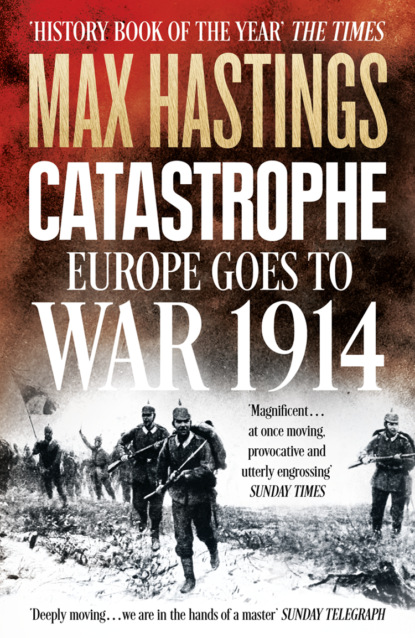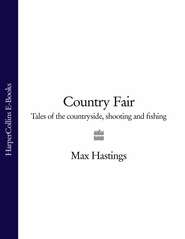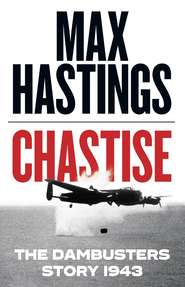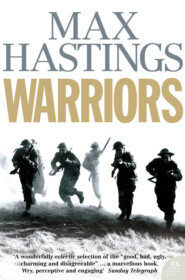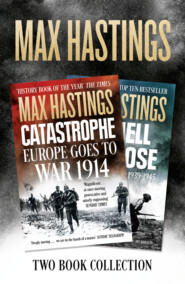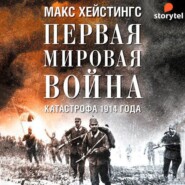По всем вопросам обращайтесь на: info@litportal.ru
(©) 2003-2024.
✖
Catastrophe: Europe Goes to War 1914
Настройки чтения
Размер шрифта
Высота строк
Поля
A View of the Eastern Front (#litres_trial_promo)
The Russian advance into East Prussia (#litres_trial_promo)
The Battle of Tannenberg, 24–29 August 1914: the pre-battle situation (#litres_trial_promo)
The Battle of Tannenberg: the final act (#litres_trial_promo)
German advance, 17 August–5 September 1914 (#litres_trial_promo)
The Battle of the Marne, 5–6 September 1914 (#litres_trial_promo)
The Battle of the Marne, 7–8 September 1914 (#litres_trial_promo)
The Battle of the Marne, 9 September 1914 (#litres_trial_promo)
The German armies in retreat towards the Aisne (#litres_trial_promo)
The Galician theatre (#litres_trial_promo)
The allied withdrawal to the Yser–Lys position, 9–15 October 1914 (#litres_trial_promo)
The First Battle of Ypres: the first moves (#litres_trial_promo)
The First Battle of Ypres: final positions (#litres_trial_promo)
Approximate positions on the Eastern and Western Fronts, December 1914 (#litres_trial_promo)
As commandant of the British Army’s staff college in 1910, Brigadier-General Henry Wilson asserted the likelihood of a European war, and argued that Britain’s only prudent option was to ally itself with France against the Germans. A student ventured to argue, saying that only ‘inconceivable stupidity on the part of statesmen’ could precipitate a general conflagration. This provoked Wilson’s derision: ‘Haw! Haw! Haw!!! Inconceivable stupidity is just what you’re going to get.’
‘We are readying ourselves to enter a long tunnel full of blood and darkness’ ANDRÉ GIDE, 28 July 1914
A bantering Russian foreign ministry official said to the British military attaché on 16 August: ‘You soldiers ought to be very pleased that we have arranged such a nice war for you.’ The officer answered: ‘We must wait and see whether it will be such a nice war after all.’
Introduction (#ulink_d2c87690-a163-5991-932b-a6cf428711e3)
Winston Churchill wrote afterwards: ‘No part of the Great War compares in interest with its opening. The measured, silent drawing together of gigantic forces, the uncertainty of their movements and positions, the number of unknown and unknowable facts made the first collision a drama never surpassed. Nor was there any other period in the War when the general battle was waged on so great a scale, when the slaughter was so swift or the stakes so high. Moreover, in the beginning our faculties of wonder, horror and excitement had not been cauterized and deadened by the furnace fires of years.’ All this was so, though few of Churchill’s fellow participants in those vast events embraced them with such eager appetite.
In our own twenty-first century, the popular vision of the war is dominated by images of trenches, mud, wire and poets. It is widely supposed that the first day of the 1916 Battle of the Somme was the bloodiest of the entire conflict. This is not so. In August 1914 the French army, advancing under brilliant sunshine across a virgin pastoral landscape, in dense masses clad in blue overcoats and red trousers, led by officers riding chargers, with colours flying and bands playing, fought battles utterly unlike those that came later, and at even more terrible daily cost. Though French losses are disputed, the best estimates suggest that they suffered well over a million casualties
in 1914’s five months of war, including 329,000 dead. One soldier whose company entered its first battle with eighty-two men had just three left alive and unwounded by the end of August.
The Germans suffered 800,000 casualties in the same period, including three times as many dead as during the entire Franco-Prussian War. This also represented a higher rate of loss than at any later period of the war. The British in August fought two actions, at Mons and Le Cateau, which entered their national legend. In October their small force was plunged into the three-week nightmare of the First Battle of Ypres. The line was narrowly held, with a larger French and Belgian contribution than chauvinists acknowledge, but much of the old British Army reposes forever in the region’s cemeteries: four times as many soldiers of the King perished in 1914 as during the three years of the Boer War. Meanwhile in the East, within weeks of abandoning their harvest fields, shops and lathes, newly mobilised Russian, Austrian and German soldiers met in huge clashes; tiny Serbia inflicted a succession of defeats on the Austrians which left the Hapsburg Empire reeling, having by Christmas suffered 1.27 million casualties at Serb and Russian hands, amounting to one in three of its soldiers mobilised.
Many books about 1914 confine themselves either to describing the political and diplomatic maelstrom from which the armies flooded forth in August, or to providing a military narrative. I have attempted to draw together these strands, to offer readers some answers, at least, to the enormous question: ‘What happened to Europe in 1914?’ Early chapters describe how the war began. Thereafter, I have traced what followed on the battlefields and behind them until, as winter closed in, the struggle lapsed into stalemate, and attained the military character that it retained, in large measure, until the last phase in 1918. Christmas 1914 is an arbitrary point of closure, but I would cite Winston Churchill’s remarks above, arguing that the opening phase of the conflict had a unique character which justifies examining it in isolation. My concluding chapter offers some wider reflections.
The outbreak has been justly described as the most complex series of happenings in history, much more difficult to comprehend and explain than the Russian Revolution, the onset of World War II or the Cuban missile crisis. This part of the story is inevitably that of the statesmen and generals who willed it, of the rival manoeuvres of the Triple Alliance – Germany and Austria-Hungary with Italy as a non-playing member – against the Triple Entente of Russia, France and Britain.
In today’s Britain, there is a widespread belief that the war was so horrendous that the merits of the rival belligerents’ causes scarcely matter – the Blackadder take on history, if you like. This seems mistaken, even if one does not entirely share Cicero’s view that the causes of events are more important than the events themselves. That wise historian Kenneth O. Morgan, neither a conservative nor a revisionist, delivered a 1996 lecture about the cultural legacy of the twentieth century’s two global disasters, in which he argued that ‘the history of the First World War was hijacked in the 1920s by the critics’. Foremost among these was Maynard Keynes, an impassioned German sympathiser who castigated the supposed injustice and folly of the 1919 Versailles Treaty, without offering a moment’s speculation about what sort of peace Europe would have had if a victorious Kaiserreich and its allies had been making it. The contrast is striking, and wildly overdone, between the revulsion of the British people following World War I, and their triumphalism after 1945. I am among those who reject the notion that the conflict of 1914–18 belonged to a different moral order from that of 1939–45. If Britain had stood aside while the Central Powers prevailed on the continent, its interests would have been directly threatened by a Germany whose appetite for dominance would assuredly have been enlarged by victory.
The seventeenth-century diarist John Aubrey wrote: ‘About 1647, I went to see Parson Stump out of curiosity to see his Manuscripts, whereof I had seen some in my childhood; but by that time they were lost and disperst; his sons were gunners and souldiers, and scoured their gunnes with them.’ All historians face such disappointments, but the contrary phenomenon also afflicts students of 1914: there is an embarrassment of material in many languages, and much of it is suspect or downright corrupt. Almost all the leading actors in varying degree falsified the record about their own roles; much archival material was destroyed, not merely by carelessness but often because it was deemed injurious to the reputations of nations or individuals. From 1919 onwards Germany’s leaders, in pursuit of political advantage, strove to shape a record that might exonerate their country from war guilt, systematically eliminating embarrassing evidence. Some Serbs, Russians and Frenchmen did likewise.
Moreover, because so many statesmen and soldiers changed their minds several times during the years preceding 1914, their public and private words can be deployed to support a wide range of alternative judgements about their convictions and intentions. An academic once described oceanography as ‘a creative activity undertaken by individuals who are … gratifying their own curiosity. They are trying to find meaningful patterns in the research data, their own as well as other people’s, and far more frequently than one might suppose, the interpretation is frankly speculative.’ The same is true about the study of history in general, and that of 1914 in particular.
Scholarly argument about responsibility for the war has raged through decades and several distinct phases. A view gained acceptance in the 1920s and thereafter, influenced by a widespread belief that the 1919 Versailles Treaty imposed unduly harsh terms upon Germany, that all the European powers shared blame. Then Luigi Albertini’s seminal work The Origins of the War of 1914 appeared in Italy in 1942 and in Britain in 1953, laying the foundations for many subsequent studies, especially in its emphasis on German responsibility. In 1961 Fritz Fischer published another ground-breaking book, Germany’s War Aims in the First World War, arguing that the Kaiserreich must bear the burden of guilt, because documentary evidence showed the country’s leadership bent upon launching a European war before Russia’s accelerating development and armament precipitated a seismic shift in strategic advantage.
At first, Fischer’s compatriots responded with outrage. They were members of the generation which reluctantly accepted a necessity to shoulder responsibility for the Second World War; now, here was Fischer insisting that his own nation should also bear the guilt for the First. It was too much, and his academic brethren fell upon him. The bitterness of Germany’s ‘Fischer controversy’ has never been matched by any comparable historical debate in Britain or the United States. When the dust settled, however, a remarkable consensus emerged that, with nuanced reservations, Fischer was right.
But in the past three decades, different aspects of his thesis have been energetically challenged by writers on both sides of the Atlantic. Among the most impressive contributions was that of Georges-Henri Soutou, in his 1989 work L’Or et le sang. Soutou did not address the causes of the conflict, but instead the rival war aims of the allies and the Central Powers, convincingly showing that rather than entering the conflict with a coherent plan for world domination, the Germans made up their objectives as they went along. Some other historians have ploughed more contentious furrows. Sean McMeekin wrote in 2011: ‘The war of 1914 was Russia’s war even more than it was Germany’s.’ Samuel Williamson told a March 2012 seminar at Washington’s Wilson Center that the theory of explicit German guilt is no longer tenable. Niall Ferguson places a heavy responsibility on British foreign secretary Sir Edward Grey. Christopher Clark argues that Austria was entitled to exact military retribution for the murder of the Archduke Franz Ferdinand upon Serbia, which was effectively a rogue state. Meanwhile John Rohl, magisterial historian of the Kaiser and his court, remains unwavering in his view that there was ‘crucial evidence of intentionality on Germany’s part’.
No matter – for the moment – which of these theses seems convincing or otherwise: suffice it to say there is no danger that controversy about 1914 will ever be stilled. Many alternative interpretations are possible, and all are speculative. The early twenty-first century has produced a plethora of fresh theories and imaginative reassessments of the July crisis, but remarkably little relevant and persuasive new documentary material. There is not and never will be a ‘definitive’ interpretation of the coming of war: each writer can only offer a personal view. While I make plain my own conclusions, I have done my best to rehearse contrary evidence, to assist readers in making up their own minds.
Contemporary witnesses were as awed as are their twenty-first-century descendants by the immensity of what befell Europe in August 1914 and through the months and years that followed. Lt. Edward Louis Spears, British liaison officer with the French Fifth Army, reflected long afterwards: ‘When an ocean liner goes down, all on board, great and small alike, struggle with equal futility and for about the same time, against elements so overwhelming that any difference there may be in the strength or ability of the swimmers is insignificant compared to the forces against which they are pitted, and which will engulf them all within a few minutes of each other.’
Once the nations became locked in strife I have emphasised the testimony of humble folk – soldiers, sailors, civilians – who became its victims. Although famous men and familiar events are depicted here, any book written a century on should aspire to introduce some new guests to the party, which helps to explain my focus on the Serbian and Galician fronts, little known to Western readers.
One difficulty in describing vast events that unfolded simultaneously on battlefields many hundreds of miles apart is to decide how to present them. I have chosen to address theatres in succession, accepting some injury to chronology. This means readers need to recall – for instance – that Tannenberg was fought even as the French and British armies were falling back to the Marne. But coherence seems best served by avoiding precipitate dashes from one front to another. As in some of my earlier books, I have striven to omit military detail, divisional and regimental numbers and suchlike. Human experience is what most readily engages the imagination of a twenty-first-century readership. But to understand the evolution of the early campaigns of World War I, it is essential to know that every commander dreaded ‘having his flank turned’, because the outer edges and rear of an army are its most vulnerable aspects. Much that happened to soldiers in the autumn of 1914, alike in France, Belgium, Galicia, East Prussia and Serbia, derived from the efforts of generals either to attack an open flank, or to escape becoming the victim of such a manoeuvre.
Hew Strachan, in the first volume of his masterly history of World War I, addressed events in Africa and the Pacific, to remind us that this became indeed a global struggle. I decided that a similar canvas would burst through the frame of my own work. This is therefore a portrait of Europe’s tragedy, which heaven knows was vast and terrible enough. In the interests of clarity, I have imposed some arbitrary stylistic forms. St Petersburg changed its name to Petrograd on 19 August 1914, but I have retained throughout the old – and modern – name. Serbia was commonly spelt ‘Servia’ in contemporary newspapers and documents, but I have used the former, even in quotations. Hapsburg citizens and soldiers are here often described as Austrians rather than properly as Austro-Hungarians, save in a political context. After the first mention of an individual whose full name is ‘von’, as in von Kluck, the honorific is omitted. Place-names are standardised so that, for instance, Mulhouse loses its German designation as Mülhausen.
Though I have written many books about warfare, and especially about the Second World War, this is my first full-length work about its forerunner. My own engagement with the period began in 1963, when as a callow school-leaver in my ‘gap year’, I was employed as an assistant researcher on BBC TV’s epic twenty-six part series The Great War at a salary of £10 a week, at least £9 more than I was worth. Programme writers included John Terraine, Correlli Barnett and Alistair Horne. I interviewed and corresponded with many veterans of the conflict, then merely entering old age, and explored both the published literature and archive documents. I embraced that youthful experience as one of the happiest and most rewarding of my life, and some of the fruits of my 1963–64 labours have proved useful for this book.
My generation of students eagerly devoured Barbara Tuchman’s 1962 best-seller August 1914. It came as a shock, a few years later, to hear an academic historian dismiss her book as ‘hopelessly unscholarly’. It remains nonetheless a dazzling essay in narrative history, which retains the unembarrassed affection of many admirers, including myself, in whom it contributed significantly to stimulating a passion for the past. Those days will exercise an undying fascination for mankind: they witnessed the last fatal flourishes of the old crowned and cockaded Europe, followed by the birth of a terrible new world in arms.
MAX HASTINGS
Chilton Foliat, Berkshire
June 2013
1914 Chronology (#ulink_e478ad57-25f3-5882-a58f-274e6bb2570a)
The Organisation of Armies in 1914 (#ulink_ff1c873a-0006-5e4b-a35b-034c5a857f46)
The structure of each belligerent’s forces and the size of their sub-units varied, but it may be helpful to offer readers a very rough crib:
An ARMY might be composed of anything from two to five CORPS (each usually commanded by a lieutenant-general). A corps comprised two or three infantry DIVISIONS (commanded by major-generals), each with an establishment of 15–20,000 men – cavalry divisions averaged about one-third of that strength – together with support, engineer and logistics units, and usually some heavy artillery. A British division might consist of three BRIGADES (commanded by brigadier-generals), all with their own guns – so-called field artillery – ideally in the proportion of at least one battery for each infantry battalion. Some continental armies placed regiments of two or three battalions directly under divisional command. A British infantry brigade, meanwhile, usually consisted of four BATTALIONS, initially about 1,000 strong apiece, commanded by lieutenant-colonels. A battalion had four rifle COMPANIES of two hundred men, each led by a major or captain, together with a support echelon – machine-guns, transport, supply and suchlike. A company had four rifle PLATOONS commanded by lieutenants, with forty men apiece. Cavalry regiments, each of four to six hundred men, were instead divided into squadrons and troops. All these ‘establishment’ strengths diminished fast under the stress of battle.
Prologue (#ulink_b52c0c7d-e6eb-5265-a59e-54dee6639485)
SARAJEVO
The quirky little melodrama that unfolded in Bosnia on 28 June 1914 played the same role in the history of the world as might a wasp sting on a chronically ailing man who is maddened into abandoning a sickbed to devote his waning days to destroying the nest. Rather than providing an authentic ‘cause’ for the First World War, the murder of the Archduke Franz Ferdinand of Austria-Hungary was exploited to justify unleashing forces already in play. It is merely a trifling irony of history that a teenage terrorist killed a man who, alone among the leaders of the Hapsburg Empire, would probably have used his influence to try to prevent a cataclysm. But the events of that torrid day in Sarajevo exercise a fascination for posterity which must be indulged by any chronicler of 1914.
Franz Ferdinand was not much loved by anyone save his wife. A corpulent fifty-year-old, one of the Hapsburg Empire’s seventy archdukes, he became heir to the throne after his cousin Crown Prince Rudolf shot himself and his mistress at Mayerling in 1889. The Emperor Franz Joseph resented his nephew; others considered him an arrogant and opinionated martinet. Franz Ferdinand’s ruling passion was shooting: he accounted for some 250,000 wild creatures to his own gun, before ending his days in Gavrilo Princip’s threadbare little gamebag.
In 1900 the Archduke conferred his affections on a Bohemian aristocrat, Sophie Chotek. She was intelligent and assertive: at army manoeuvres she once scolded the presiding officers for the imprecision of their men’s marching. But lack of royal blood rendered her in the eyes of the imperial court ineligible to become empress. The monarch insisted that their marriage, when he grudgingly consented to it, should be morganatic. This placed them beyond the social pale of most of Austria’s haughty aristocracy. Though Franz Ferdinand and Sophie were blissfully happy with each other, their lives were marred by the petty humiliations heaped upon her, as an unroyal royal appendage. Franz Ferdinand named a favourite walk at his Bohemian castle of Konopiště ‘Oberer Kreuzweg’ – ‘the upper Stations of the Cross’. At court functions, he followed the Emperor in precedence – but without his wife; he nursed a loathing for the lord chamberlain, Alfred Prince Montenuovo, who orchestrated such insults.
Franz Ferdinand’s status as heir apparent nonetheless ensured that he and his wife entertained generals, politicians and foreign grandees. On 13 June 1914, Germany’s Kaiser visited them at Konopiště, accompanied by Grand-Admiral Alfred von Tirpitz, a rose-fancier who was keen to see the castle’s famous borders. Wilhelm II was prone to social mishaps: on this occasion his dachshunds, Wadl and Hexl, disgraced themselves by killing one of Franz Ferdinand’s exotic pheasants. The Kaiser and the Archduke appear to have discussed trivia, rather than European or Balkan politics.





